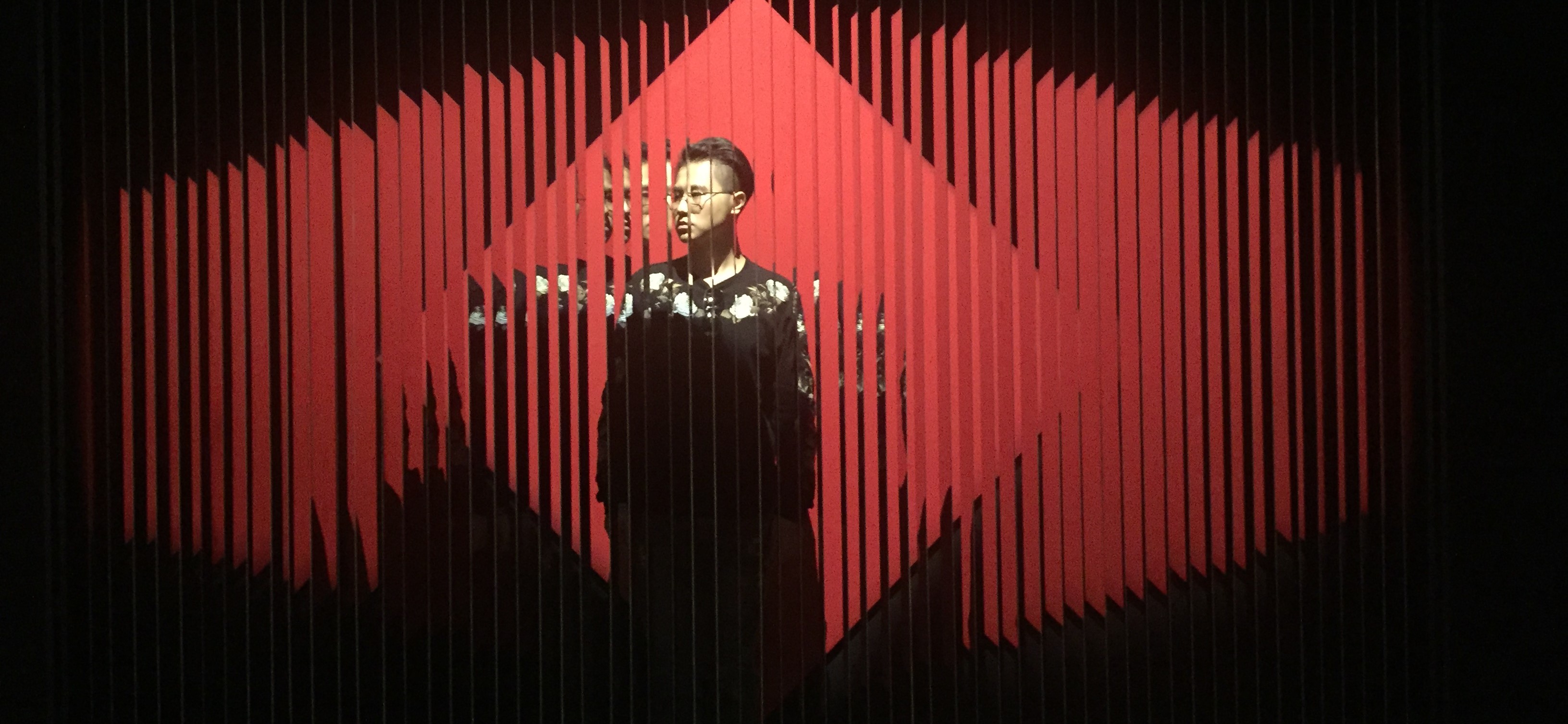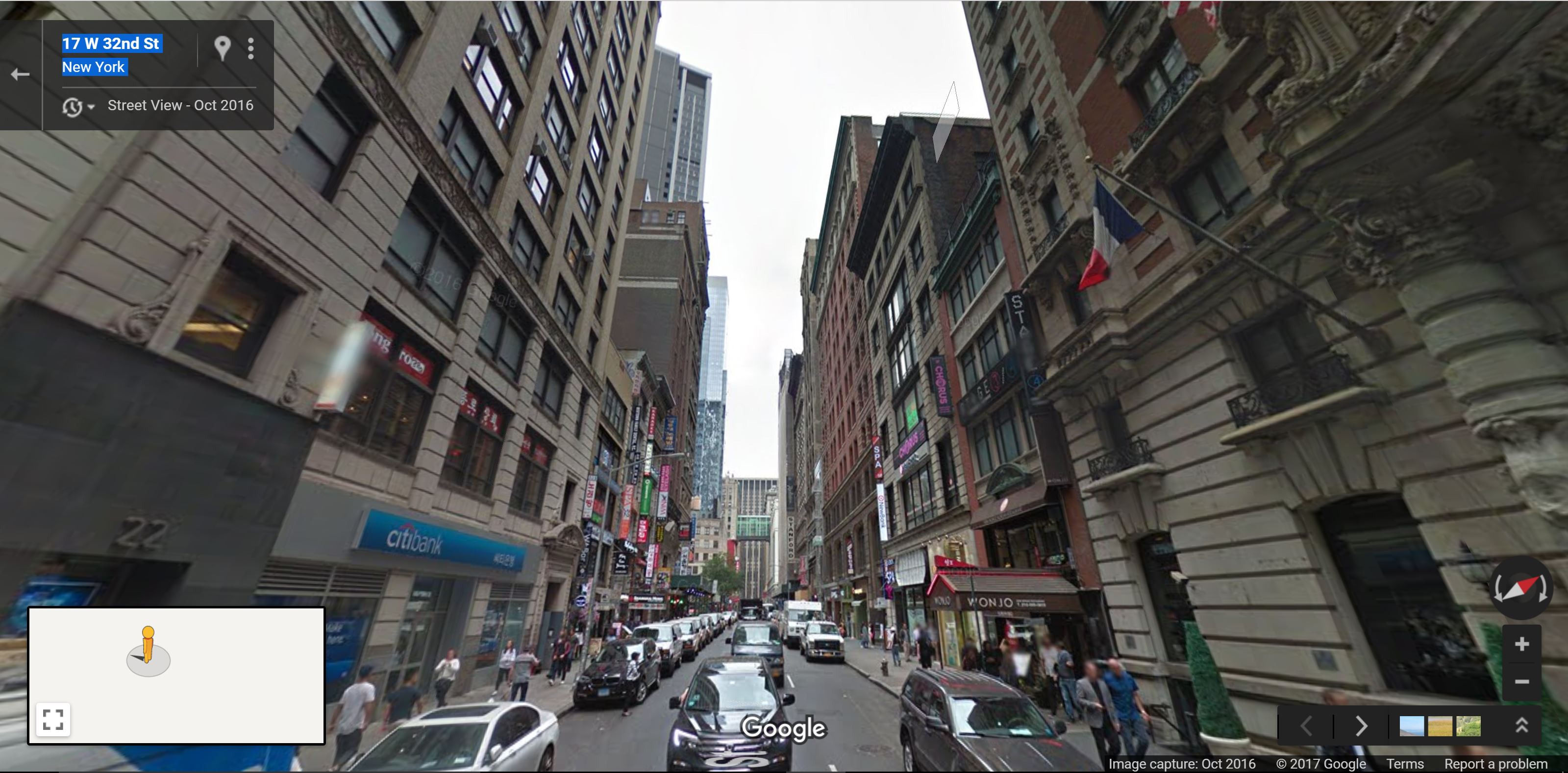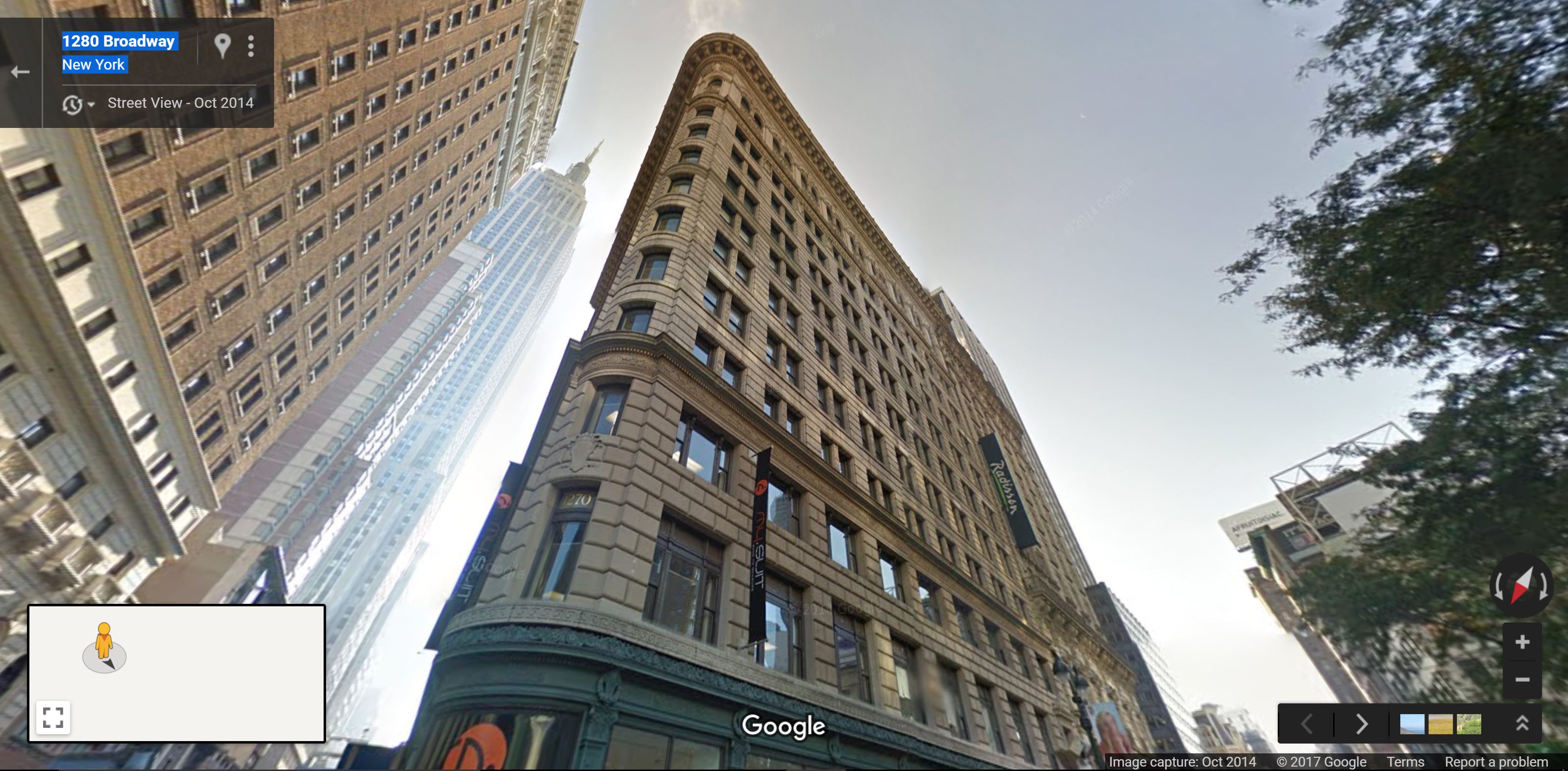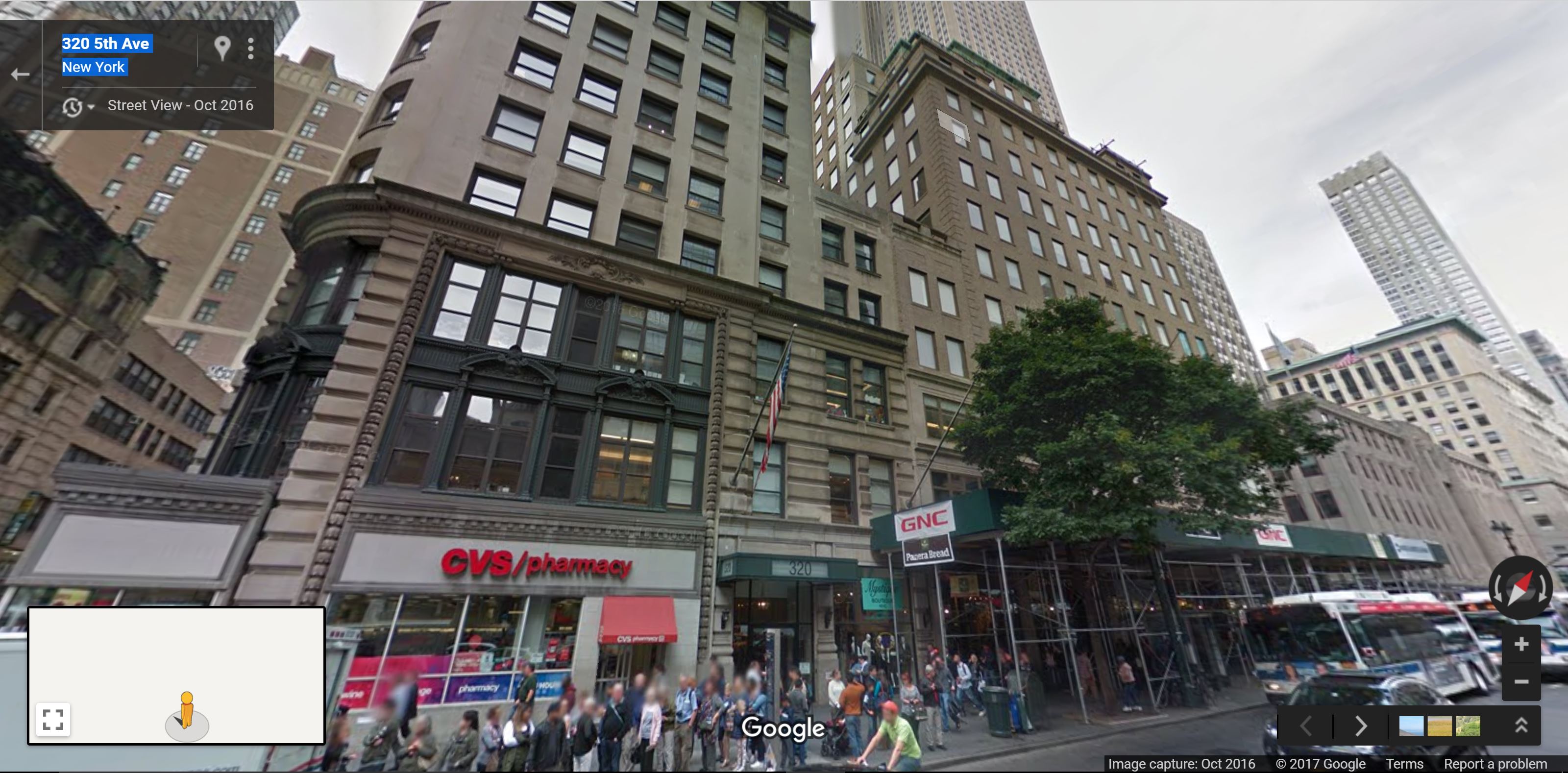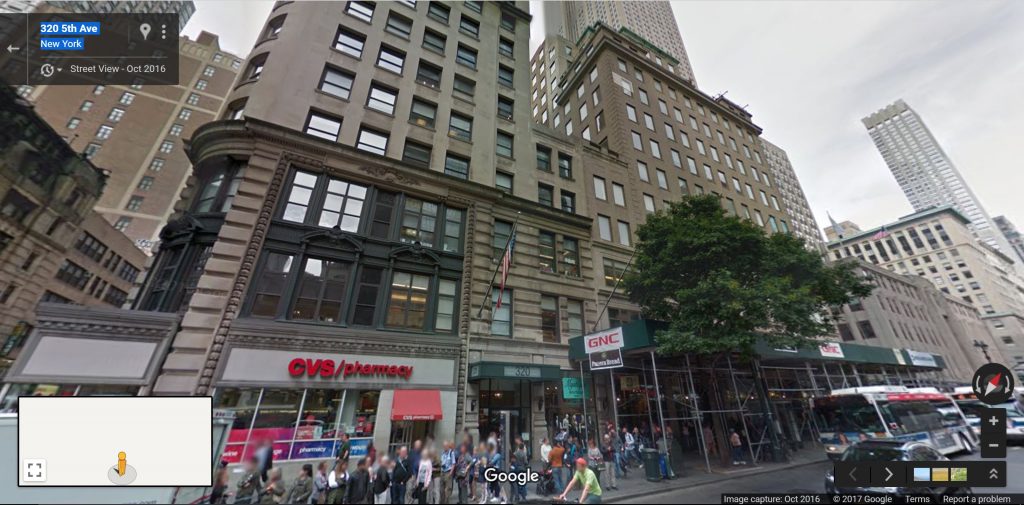INTERVIEW RECORDING
When did you come to NY Koreatown?
- 2001
How is it different from 2001 and 2017?
- They have more restaurants and beauty shops now, but there’s not much difference/development in building.
Do you feel strangeness from Koreatown or are there lots of differences between Koreatown and Korea? Does it make you comfortable as you are in Korea, your home?
- Not really. The atmosphere of Koreatown is very close to my hometown. The way it looks, such as signs of the stores and restaurants or people around me makes me feel like I’m still in Korea
STREET VIEW PHOTO
CONTRAST PHOTO
SOUND RECORDING
RESEARCH
Secrets of Koreatown
32nd Street, New York, 11004
By Wendy Lu Special to amNewYork July 14, 2016
Koreatowns across the United States are generally much newer than other ethnic enclaves, like Chinatowns, but they still hold extensive history. Koreatown in Manhattan is no exception.
Located on West 32nd Street between Fifth and Sixth avenues, Koreatown — also known as Korea Way — was initially formed for wholesalers working in the nearby Korea Business District, according to Jinwon Kim, a visiting assistant professor of sociology at Oberlin College who has studied Koreatown extensively.
It wasn’t until the early 1980s that Korean immigrants began opening restaurants and stores on 32nd Street, which we now know as Koreatown. Many wholesalers have since moved out of Manhattan and relocated to Queens and New Jersey because of skyrocketing rents.
Kim and other Koreatown experts shared little-known facts of this cultural hot spot with amNewYork, proving that there’s much more to the area than barbecue.
Koreatown was once known as a ‘hidden world’
Even though Korean entrepreneurs started opening shop on 32nd Street in the early 1980s, the area didn’t become attractive to visitors until the 1990s. According to Kim, the presence of the “welfare hotel” at the corner of 32nd Street and Broadway, previously called the Martinique, made it challenging for businesses to settle, until it closed in 1989. The hotel was one of the most notorious in the city at the time, she said. Its bad reputation deterred New Yorkers from shopping and dining on 32nd Street.
In the early 2000s, Koreatown’s popularity was limited to young Asian-Americans who were interested in Korean pop culture — like K-pop and Korean dramas. But, the area was a “hidden world” that went largely unnoticed by non-Asians until the 2010s when Korean barbecue and other ethnic foods became more in demand, Kim said.
Korean political freedom helped K-town grow
The Korean economy grew rapidly in the late 1980s, when South Korea achieved partial political freedom, allowing global travel. As a result, Manhattan’s K-town saw a rapid increase of Korean tourists and students who came to study abroad in the United States, Kim said.
The ‘Korea Way’ sign wasn’t always the street’s marker
On May 23, 2007, a series of colorful culture banners with the words “Korea Way” were unveiled and placed onto street poles between West 25th and 32nd streets.
The blue sign we’re all familiar with today was permanently installed eight months later on New Year’s Day 2008, an effort led by the Korean-American Association of Greater New York, according to the KoreaDaily.
At the official unveiling ceremony, Young Kyu Yi, president of the Korean-American Institute for Future Strategies of New York, said in Korean that he hopes “the sign will increase the pride of Korean immigrants and Korean tourists … and that it will further tell the story of Koreatown,” reported the KoreaDaily.
A timeline of K-town’s economy
Seoul House was the first restaurant that opened in Koreatown back in 1972, known for its beef dishes. Other eateries that joined the area include New York Gomtang House, which originally opened on 27th Street in 1979 and then moved to 32nd Street three years later, and Kangseo Heokwan in 1984.
Koryo Book Store, which Kim called a “pioneer” of West 32nd Street, opened in 1980 and is still in the same location. In 1986, the Stanford Hotel opened and was followed by optometrists’ offices and beauty salons.
K-town is known to be a hub for social action
Aside from being one of the hottest dining areas in New York City, Koreatown has also been a go-to spot for the local Korean community to gather during historical events.
In April 2014, South Korea was shaken by tragedy when the Sewol ferry sank off the south coast, resulting in the deaths of more than 300 people. Almost all of the victims were students from Danwon High School.
About a month after the ferry sank, the first candlelight vigil and peaceful rally in Koreatown took place on May 16, 2014, Kim said. This was one of seven rallies related to the incident organized by Koreans in the United States. While the Sewol ferry disaster made headlines globally, Korean-Americans struggled to spread the word about the rallies and vigils held in Koreatown.
A popular restaurant got a traditional makeover
Now known for its unique kimchee, Muk Eun Ji was once recognized as an Asian fusion restaurant that served supreme Korean barbecue and Chinese food. In winter 2016, owner Yong Sun Kim gave the restaurant a makeover to better reflect the traditional culture of South Korea. The changes included a new kimchee-focused menu and a display of handmade farming tools and gear once used in the Choson Dynasty (1392-1897), he said.
The display includes traditional straw shoes called “jipsin,” black netted “gat” hats once worn by men of higher social status and brown clay pots known as “hang a-ri.” Back in the old days, the clay pots were used to help ferment and store kimchee. You’ll see many “hang a-ri” in Muk Eun Ji — which is fitting, seeing as the restaurant’s name means “fermented kimchi.”
The K-town festival preserves Korean culture in NYC
The annual October Korean Parade and Festival is the second largest Korean festival in New York City, next to the Korean Harvest & Folklore Festival held in Queens, Pyong Gap Min, director of theResearch Center for Korean Community at CUNY’s Queens College, said. Around 100 Korean organizations participate in the event each year.
The parade begins at 42nd Street and ends with a festival in Koreatown. There, people can enjoy food vendors and cultural performances, from a traditional Korean folk music to modern K-pop.
The daylong parade, launched by the Korean American Association of New York and The Korean Times in the 1980s, consistently draws crowds of up to 80,000 people.
Min said the event is “very important for the preservation of Korean culture” in the city.
K-beauty products are food for your skin
When Tony Moly’s flagship store opened in the heart of Koreatown in 2015, it brought a whole slew of K-beauty products to NYC — including a collection of face masks. We’ve all heard about the magical properties of snail mucus, but what about rice wine and poisonous pufferfish?
One of the masks is infused with makgeolli, a Korean rice wine that clears up blemishes, evens your skin tone and leaves it glowing, Mungyee Chai, a sales representative at Tony Moly said. Other face masks are filled with collagen from fugu, a poisonous pufferfish, which helps to firm and moisturize your skin. Who knew?
Look up! K-town is built vertically
You’ll notice that K-town businesses aren’t contained to the ground floor. That’s because investors in Manhattan’s K-town tend to open restaurants and bars not only on the first level of retail buildings, but also on the second, third and fourth. This is common in Seoul, but not typical in cities in the United States where Koreatown tends to be more horizontal rather than vertical. As a result, K-town has a high concentration of retail and entertainment businesses clustered on top of each other, Kim said.
